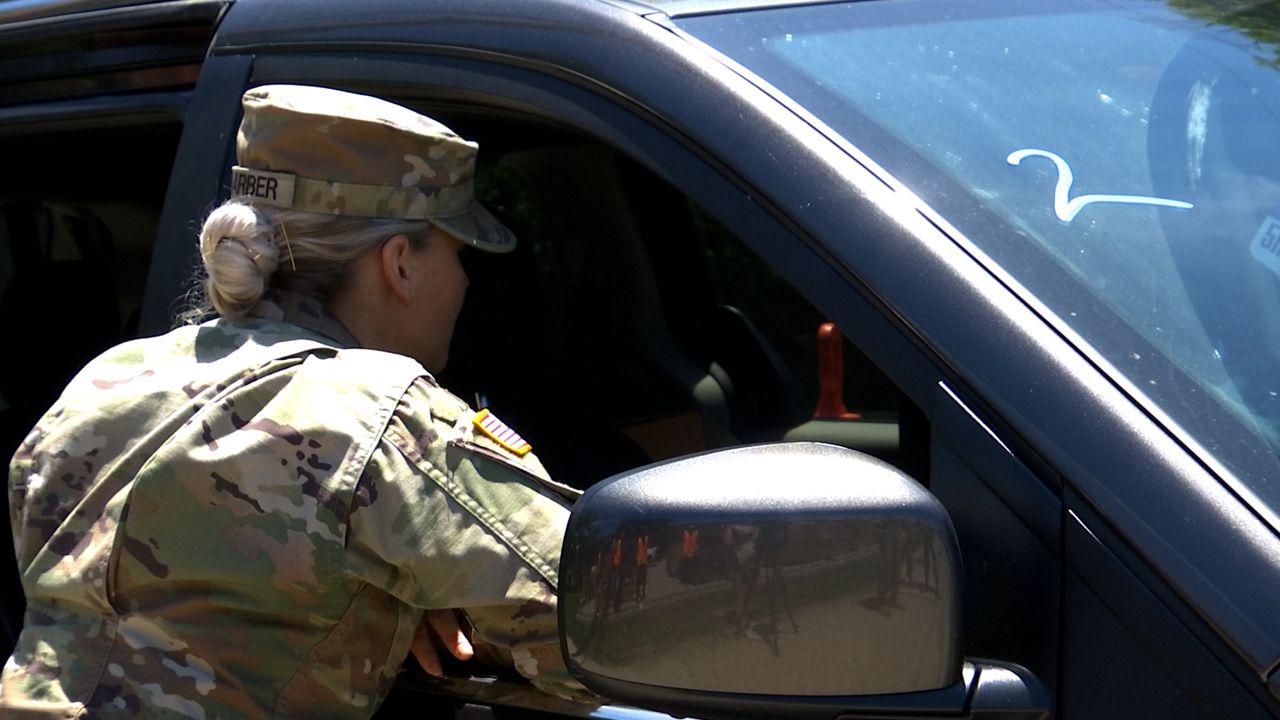CINCINNATI — Inside Ohio’s 14 food banks, everywhere from the warehouse, the loading docks and the packing rooms, a flurry of khakis and camouflage may be found. For months, the ones calling the orders, filling the boxes and running machines were all men and women from the Ohio National Guard.
Now, as coronavirus cases decline and the vaccine rollout continues, more and more plain-clothed volunteers are joining and in some places outnumbering them. Come July, it will be time for the citizen soldiers and airmen to hand over the reins and go home.
What You Need To Know
- The National Guard will end its mission at Ohio food banks July 2
- Food banks were the guard’s first deployment during the pandemic
- Hundreds of Guard members have been deployed across Ohio’s 14 food banks
- They’ve distributed 56 million pounds of food.
- The National Guard will continue to serve at testing sites and vaccination sites for the timbering

On July 2, the National Guard’s 15-month mission serving Ohio’s food banks will come to an end. Many of these citizen soldiers have been deployed since March 2020, as the food bank mission was the first to call in guardsmen and women to assist during the pandemic.
Through the past year, Staff Sgt. Makayla Sharber of the Army National Guard said she’s come to understand on a visceral level what service means.
“A lot of people that came through at the beginning were losing their jobs and they were embarrassed to come through the food banks they never thought in their entire lives that they would be coming through and depending on a food bank,” she said.
She started in Second Harvest where she worked with the management team before transferring to Cincinnati’s Freestore Foodbank six months ago.

Living in Clermont County, she said it’s been eye-opening serving so close to home.
At the beginning of the pandemic, Trisha Rayner, the chief development officer for the Freestore Foodbank, said they were seeing demand for food assistance double, but they didn’t have a lot of options to look to for help.
“When the pandemic hit our volunteers needed to stay at home and take care of their families,” she said.
The Ohio National Guard served as the workforce instead.
“We knew going into this we knew it would be a marathon and not a sprint,” Rayner said.
For months, Sharber has helped lead the team of citizen soldiers and airmen in packing shelf-stable boxes of goods as well as power packs for school-age children but it's the weekly curbside pickups she said that have made the biggest impact on her.
“Over the past year, we’ve probably done over 500,” she said.
That’s where the guard interacts directly with the people they’re helping. Filling their trunks with the food they helped pack.
Another local, Sgt. 1st Class Michael Jones said it’s helped him get a better understanding of his own neighbors.
“To me, my church is really right down the street and around the corner on Reading Road so for me, I know this community,” he said. “Working and serving our community has really been good.”
He plans to carry that with him long after he leaves Freestore next week.
In preparation for that transition, volunteers have been returning and taking on more responsibility. By June, Staff Sgt. Tony Campbell said the volunteers at Freestore outnumbers the guardsmembers and were taking on most of the heavy lifting.

“They’ve been great,” he said. “A lot of them come back and come maybe twice a week or so, so we get to see a lot of them. It’s awesome we’re leaving it in good hands.”
Rayner said July and August are set for volunteers at Freestore but in the fall, she’s hoping local companies will start considering helping out as well. She said before the pandemic, many workplaces would send large groups of employees their way to volunteer for an afternoon.
More than a year into the pandemic, she said the need is still higher than it was in 2019, but it’s well below its 2020 peak. Rayner said she’s grateful the guard has been there the entire time to help meet that demand and she’ll need a dedicated and consistent stream of volunteers to keep the momentum going.
“Our guard members got into a rhythm here,” she said. “Same with our volunteers, many of them have volunteered with us before so they just need to get back into the rhythm too and that just takes a little bit of time.”



